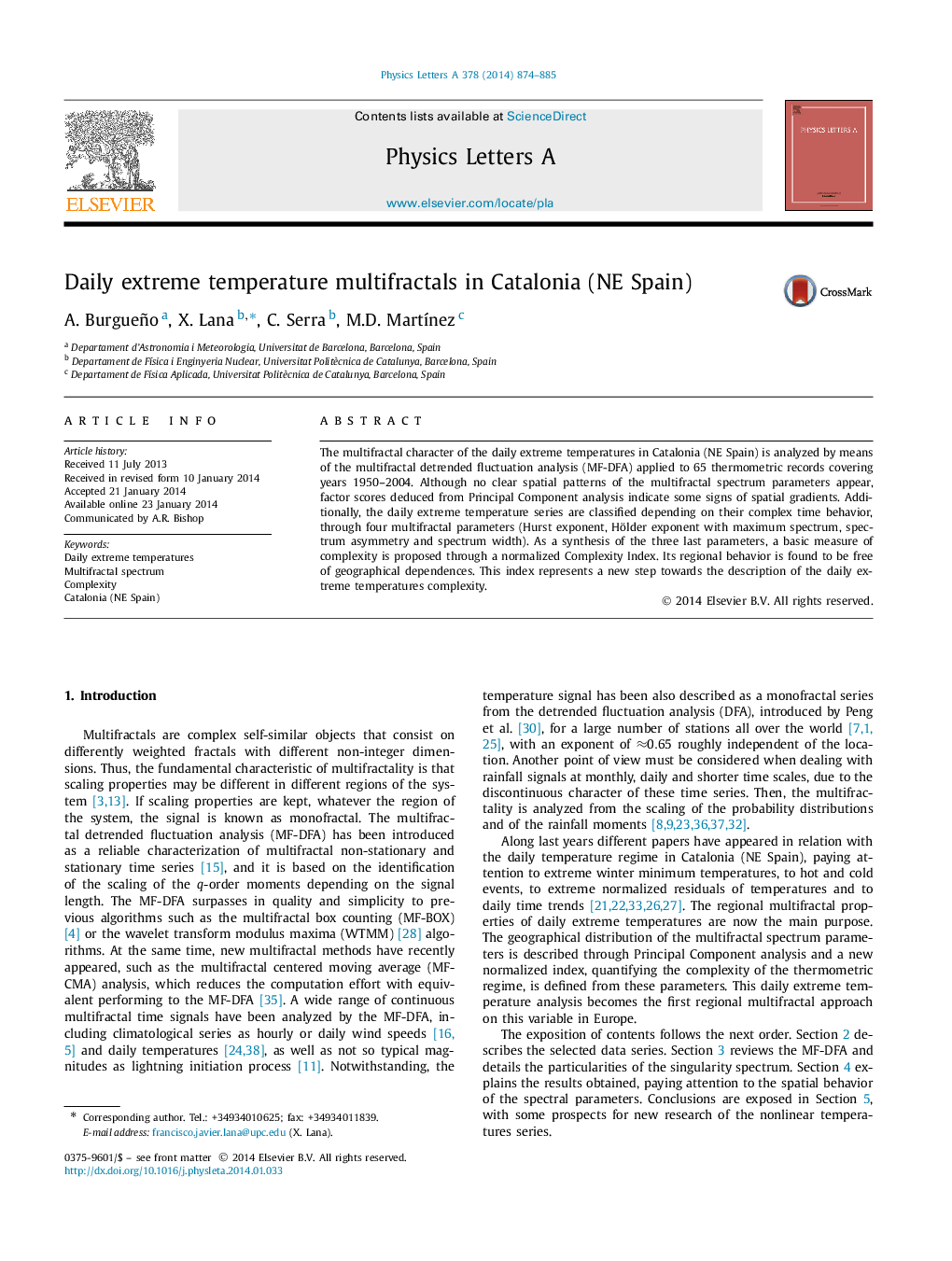| Article ID | Journal | Published Year | Pages | File Type |
|---|---|---|---|---|
| 1864374 | Physics Letters A | 2014 | 12 Pages |
•The multifractality of the daily temperatures in Catalonia (NE Spain) is analyzed.•Hurst and Hölder exponents, asymmetry and spectral width characterize multifractality.•Factor scores from Principal Component analysis depict spatial gradients.•A measure of complexity is proposed through a normalized Complexity Index.•The complexity vector permits to detect fine and smooth structure of the thermometric series.
The multifractal character of the daily extreme temperatures in Catalonia (NE Spain) is analyzed by means of the multifractal detrended fluctuation analysis (MF-DFA) applied to 65 thermometric records covering years 1950–2004. Although no clear spatial patterns of the multifractal spectrum parameters appear, factor scores deduced from Principal Component analysis indicate some signs of spatial gradients. Additionally, the daily extreme temperature series are classified depending on their complex time behavior, through four multifractal parameters (Hurst exponent, Hölder exponent with maximum spectrum, spectrum asymmetry and spectrum width). As a synthesis of the three last parameters, a basic measure of complexity is proposed through a normalized Complexity Index. Its regional behavior is found to be free of geographical dependences. This index represents a new step towards the description of the daily extreme temperatures complexity.
